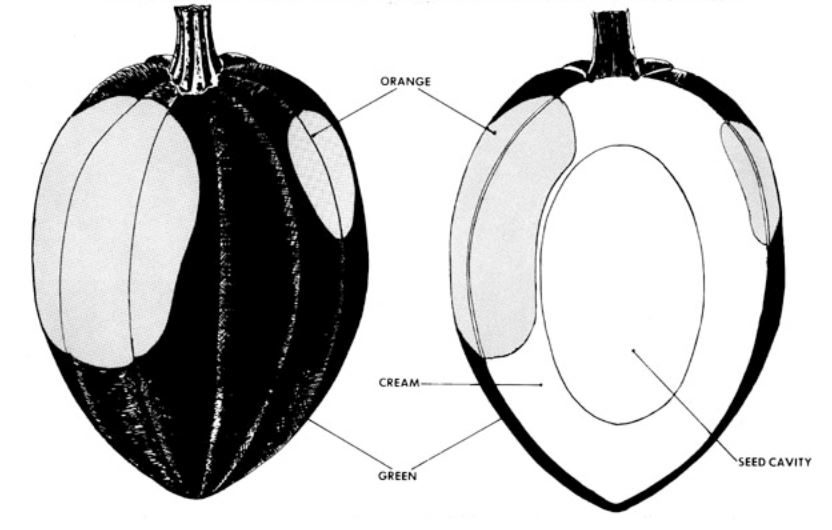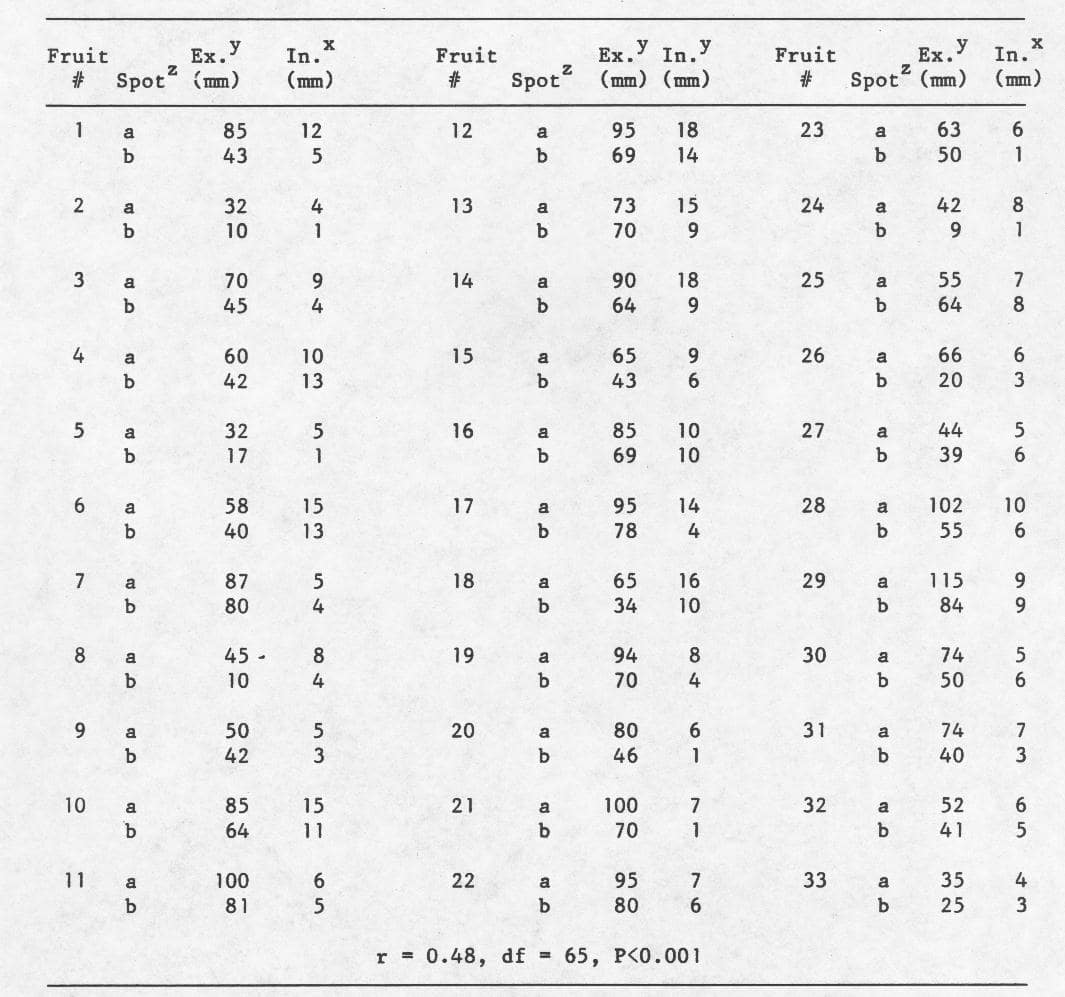Cucurbit Genetics Cooperative Report 10:100-102 (article 52) 1987
O. Shifriss
21 Walter Ave., Highland Park, NJ 08904
T.H. Superak
Harris-Moran Seed Co., 3670 Buffalo Rd., Rochester, N.Y. 14624
A BwBw line of ‘Table King’, B+B+, background was developed in 1979. Gene Bw is a weak allele of B (1). The fruits of the BwBw line are precociously pigmented and similar to the fruits of ‘Jersey Golden Acorn’ except that their distal and proximal ends tend to be green. The fruits of the heterozygote, BwB+, of ‘Table King’ background are highly variable in color, ranging from completely green to different grades of bicolor. Some of these fruits exhibit one or more precociously pigmented golden spots. Sectioning fruits through 200 spots of different size showed that each spot is made up of 2 contiguous golden areas, in the “skin” (rind, exocarp) and in the “flesh” (mesocarp). No golden spot or area in the “flesh” was unassociated with a contiguous counterpart in the “skin”. Furthermore, casual observations suggested that the sizes of the contiguous areas of each spot are possitively correlated (Shifriss, unpublished; see Figure 1). The present statistical data confirm this suggestion.
Heterozygous BwB+ plants were grown together and 33 of their fruits, each exhibiting at least 2 spots of different size, were selected for measurement. The fruits were sectioned through the widest external (“skin”) diameter of these spots and 2 measurements were taken of each spot: the length of the borderline between the contiguous golden areas and the depth of the internal golden area (Figure 1). We assumed that these parameters reflect the sizes of the two areas of each spot.
Figure 1. Diagramatic representation of a spotted fruit, illustrating external (left) and internal phenotypes.
As Table 1 shows, the coefficient of correlation (r) of the 2 parameters is highly significant statistically (P<0.001), indicating that the sizes of the contiguous areas vary in the same direction.
The consistent contiguity of the external and internal golden areas of the fruit and the statistically significant correlation between the measured parameters lead us to the following conclusion: Precocious pigmentation in “skin” and “flesh” has a common ontogenetic origin with respect to site and time at which gene B is expressed.
Table 1. Precocious pigmentation in spotted fruits of BwB+ plants of ‘Table King’ background. Correlation coefficient (r) for the exterior diameter of a spot and its interior depth. From field studies, Rochester, NY, 1986.
z Two spots of each fruit were measured, one spot being larger (a) than the other (b)
y Refers to the length of the borderline common to the contiguous golden areas of each spot. See text and Figure 1.
x Refers to the depth of the internal golden area of each spot. See text and Figure 1.
Literature Cited
- Shifriss, O. 1981. Origin, expression, and significance of gene B in Cucurbita pepo L. J. Amer. Soc. Hort. Sci. 106:220-232.